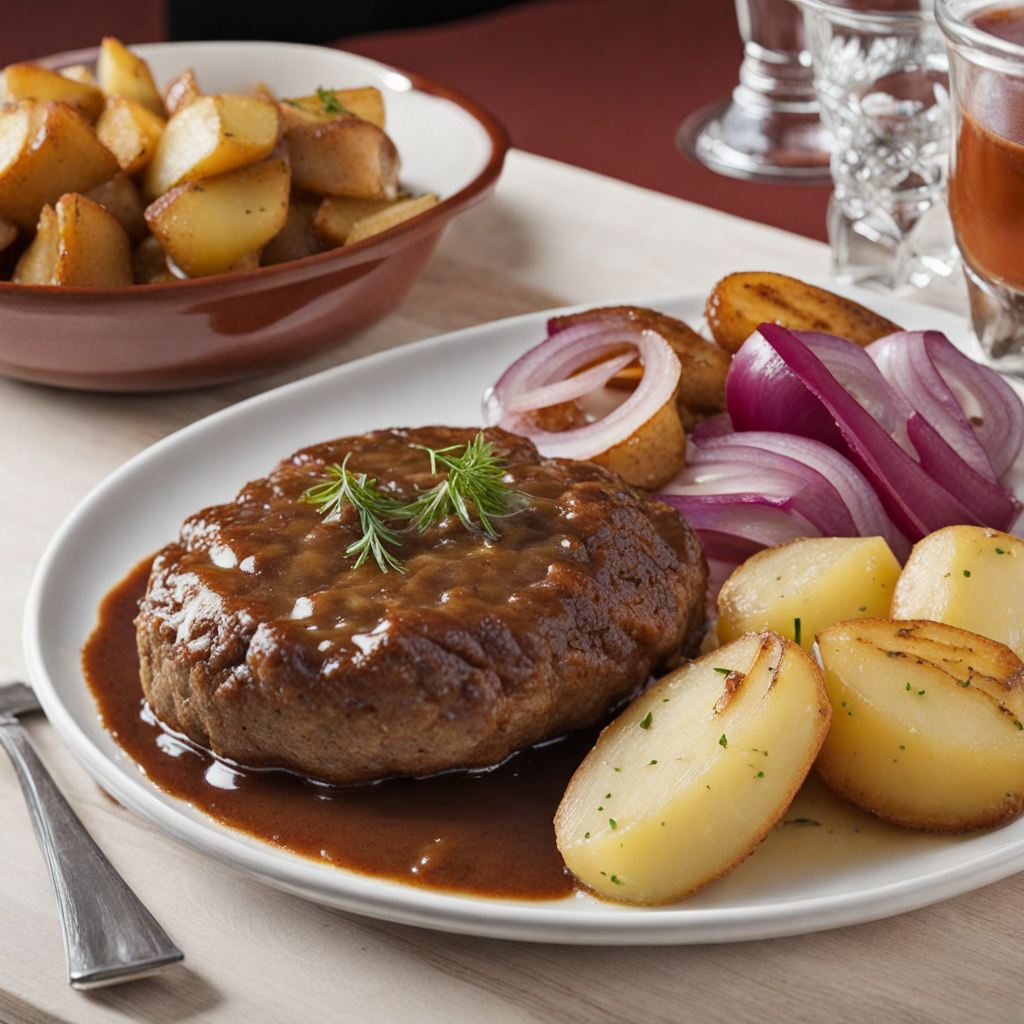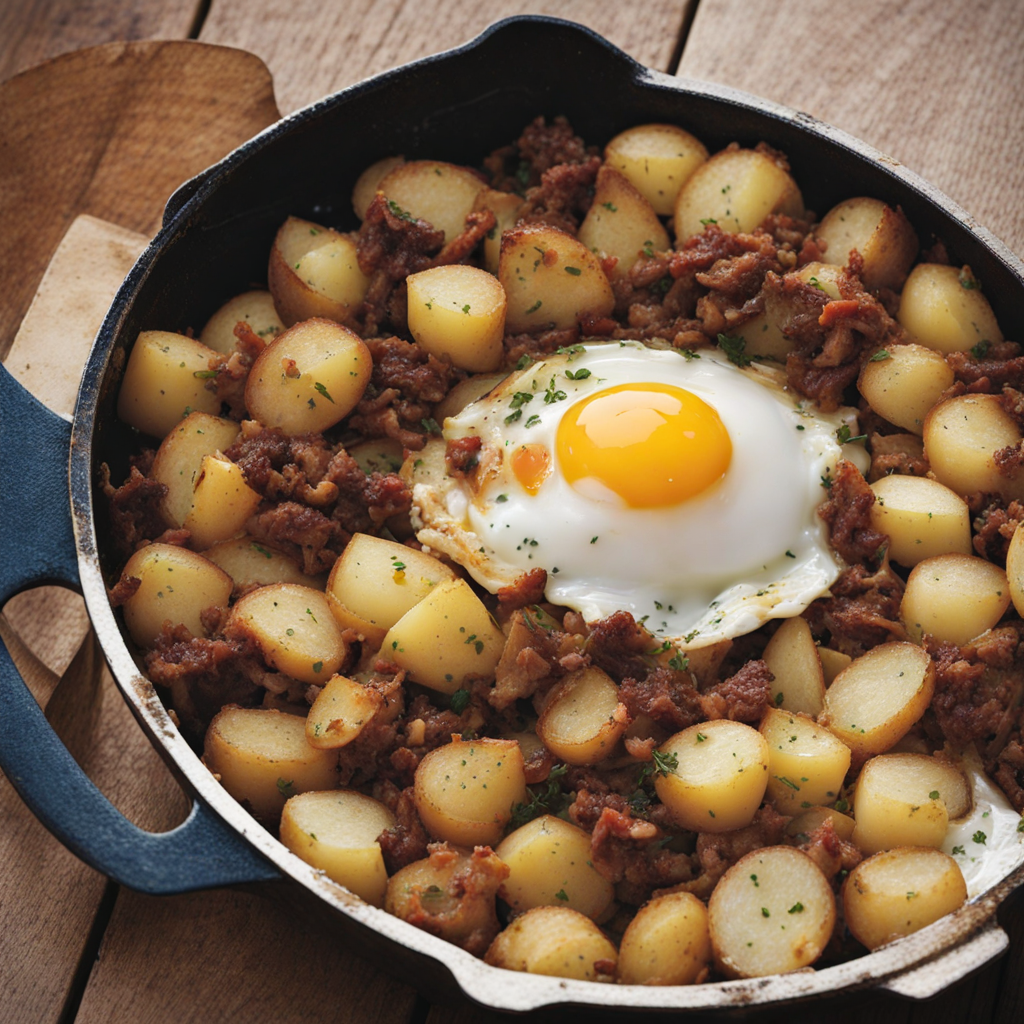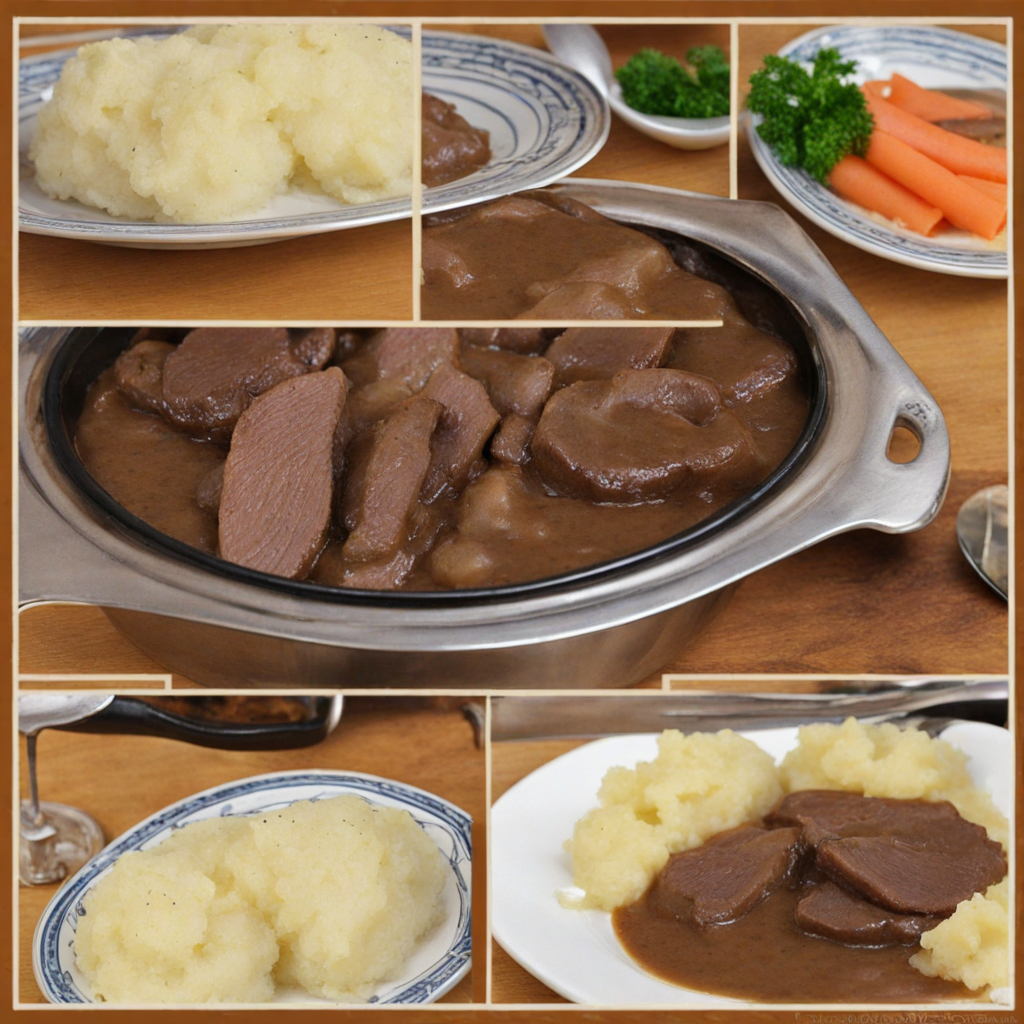Hakkebøf
Hakkebøf is a traditional Danish dish that showcases the simplicity and heartiness of Scandinavian cuisine. At its core, it consists of a ground beef patty, typically seasoned with salt and pepper, and often enriched with finely chopped onions. The meat is shaped into thick, round patties and then pan-fried to achieve a golden-brown crust while maintaining a juicy interior. This dish is not only a staple in Danish homes but also a beloved comfort food, evoking feelings of warmth and nostalgia with every bite. What makes Hakkebøf particularly delightful is its versatility in presentation and accompaniments. It is often served with a side of creamy mashed potatoes and a rich brown gravy that elevates the dish to a new level of indulgence. Additionally, a side of sautéed vegetables or pickled beets may accompany the meal, adding a burst of color and flavor that balances the richness of the beef. The combination of textures—from the tender patty to the smooth potatoes—creates a satisfying dining experience that is both hearty and comforting. While Hakkebøf might seem simple, it embodies the essence of Danish cooking, which values quality ingredients and straightforward preparation methods. The dish is often enjoyed in family gatherings and casual dining settings, making it a staple in the Danish culinary landscape. For anyone looking to explore new flavors, Hakkebøf offers a unique taste of Denmark that is both accessible and deeply rooted in tradition, providing a delicious insight into the country’s culinary heritage.
How It Became This Dish
The History of Hakkebøf: A Danish Culinary Delight Hakkebøf, a beloved dish in Denmark, embodies the essence of Danish cuisine: simple, hearty, and rich in flavor. While it may seem like just a humble minced beef patty to outsiders, its history and cultural significance are deeply intertwined with Denmark’s agricultural roots, societal changes, and culinary traditions. #### Origins of Hakkebøf The word "hakkebøf" translates literally to "chopped beef," reflecting its primary ingredient. The origins of Hakkebøf can be traced back to the medieval period when livestock farming was a vital part of Danish agrarian life. Cattle were not only a source of meat but also provided milk and leather, making them invaluable to farmers. The need for efficient use of every part of the animal led to the practice of grinding or mincing beef, resulting in dishes that could be easily cooked and enjoyed by families. During this time, the methods of preservation and preparation were crucial for survival. Minced meat dishes became popular because they could be seasoned and preserved more easily than whole cuts of meat. Hakkebøf likely emerged as a way to utilize leftover meat and offcuts, turning them into a filling meal for the working class. In a society where food waste was not an option, Hakkebøf became a symbol of resourcefulness. #### Cultural Significance As Denmark transitioned from a feudal society to a more modern state, the role of food began to reflect the changes in social structures and economic realities. The 19th century marked a pivotal moment in Danish history with the rise of the middle class and increased urbanization. As people moved into cities for work, traditional meals began to evolve, adapting to the fast-paced lifestyle of urban living. Hakkebøf gained popularity as a staple dish in Danish homes and restaurants alike. It was embraced as a comfort food, often associated with family gatherings and Sunday dinners. The dish was typically served with a side of potatoes—either boiled or mashed—and a rich gravy made from the meat juices, along with seasonal vegetables. This combination not only provided sustenance but also reflected the Danish culinary ethos of simplicity and wholesomeness. Moreover, Hakkebøf became a symbol of Danish identity. In a country where agricultural practices shaped daily life, the dish represented a connection to the land and its resources. It was an embodiment of the "hygge" lifestyle, a concept that emphasizes coziness, comfort, and togetherness. Sharing a meal of Hakkebøf with family and friends encapsulated the essence of hygge, fostering bonds and creating memories. #### Development Over Time Throughout the 20th century, Hakkebøf continued to evolve, adapting to changing tastes and dietary preferences. The dish became less about survival and more about culinary enjoyment. As the Danish economy grew and became more integrated into global markets, ingredients and cooking techniques from other cultures began to influence traditional dishes. In the post-World War II era, as Denmark experienced a culinary renaissance, chefs began to experiment with Hakkebøf, introducing new flavors and presentation styles. While the classic version remained steadfast, variations emerged, reflecting the multicultural influences on Danish cuisine. For instance, some chefs began to incorporate herbs and spices from Mediterranean cuisine, adding a fresh twist to the traditional patty. The rise of fast food in the late 20th century also impacted the perception of Hakkebøf. While the dish remained popular among home cooks, it faced competition from American-style burgers, which dominated the fast-food landscape. However, Danish chefs responded by elevating Hakkebøf in gourmet settings, emphasizing high-quality ingredients and creative presentations. The use of grass-fed beef, organic vegetables, and homemade sauces became hallmarks of modern Hakkebøf, appealing to a new generation of food enthusiasts. #### Hakkebøf Today Today, Hakkebøf holds a cherished place in Danish cuisine. It is not only a staple in homes but also features prominently in restaurants, bistros, and cafés across the country. Its adaptability allows it to fit seamlessly into various dining contexts, from casual family meals to upscale culinary experiences. In contemporary Denmark, Hakkebøf is often served in innovative ways. Some chefs create gourmet versions that incorporate unique toppings, such as caramelized onions, sautéed mushrooms, or even a fried egg, adding layers of flavor and texture. The dish is frequently paired with traditional accompaniments, such as pickled beets or a rich brown sauce, preserving its cultural roots while appealing to modern palates. Furthermore, as the global culinary landscape continues to expand, Hakkebøf has found its way onto the international stage. Danish restaurants and food festivals showcase this traditional dish, introducing it to a broader audience. Its simplicity and heartiness resonate with food lovers worldwide, making it an ambassador of Danish cuisine. #### Conclusion Hakkebøf is more than just a minced beef patty; it is a culinary narrative that encapsulates the history, culture, and evolution of Danish society. From its humble beginnings as a means of resourcefully utilizing leftover meat to its status as a cherished comfort food, Hakkebøf reflects the resilience and adaptability of Danish cuisine. As Denmark continues to embrace its rich culinary heritage while exploring new horizons, Hakkebøf remains a beloved dish that honors the past while looking towards the future. Whether enjoyed in a cozy home or a trendy restaurant, Hakkebøf is a reminder of the importance of food in fostering connections, preserving traditions, and celebrating the simple joys of life.
You may like
Discover local flavors from Denmark







